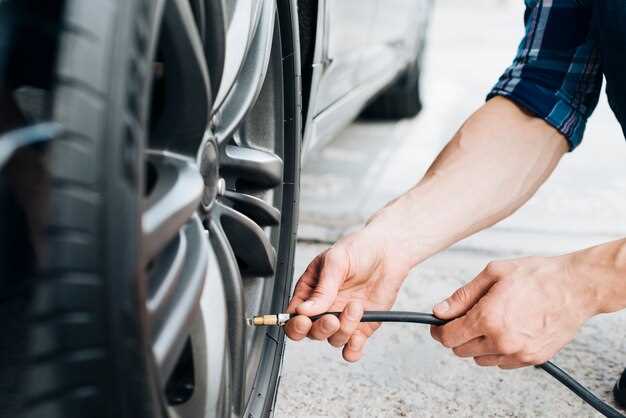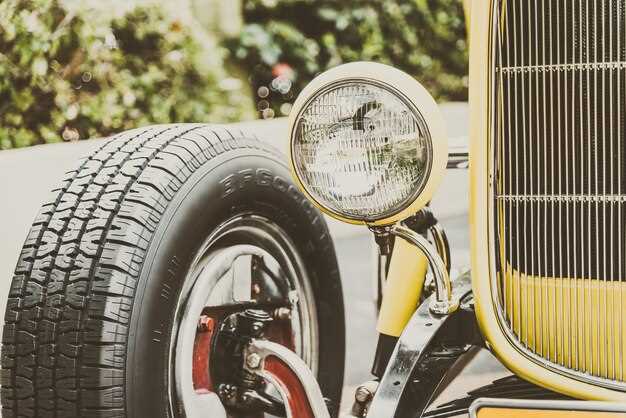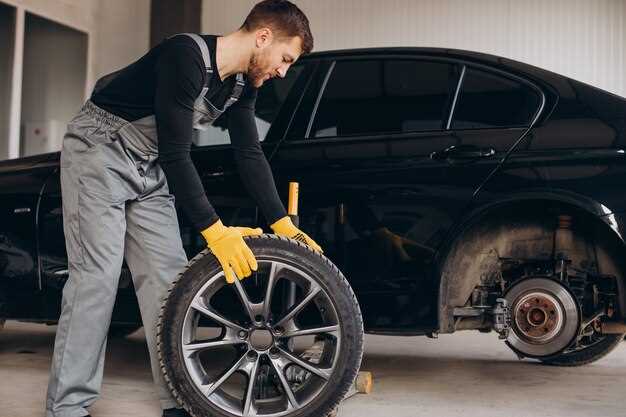
Maintaining the tires and wheels of a classic car is crucial for both safety and aesthetics. A well-kept classic vehicle not only performs better but also retains its value over time. Old cars often have unique requirements compared to modern vehicles, and understanding these can prevent common issues that arise due to neglect.
Tires are the only contact point between your classic car and the road, making their maintenance especially important. Regularly checking tire pressure, tread depth, and overall condition can help in identifying potential problems before they escalate into more serious concerns. Pay attention to aging signs like cracks or bulges, as they can indicate deterioration that compromises safety.
Additionally, the wheels of classic cars require specific care to preserve their integrity and shine. Regular cleaning, proper storage, and routine inspections for signs of corrosion or damage will prolong their lifespan. Adopting a tailored maintenance routine ensures that both tires and wheels will contribute to an optimal driving experience and keep your classic car looking its best.
How to Inspect Classic Car Tires for Wear

Regular inspection of classic car tires is essential to ensure safety and optimal performance. Start by visually examining each tire for any noticeable cracks, cuts, or bulges. These imperfections may indicate that the tire has degraded due to age or environmental exposure.
Check Tread Depth: An important aspect of tire maintenance is assessing the tread depth. Use a tread depth gauge or the penny test–insert a penny into the tread with Lincoln’s head facing down. If you can see all of Lincoln’s head, it’s time to replace the tire. Adequate tread depth is vital for traction, especially in wet conditions.
Look for Uneven Wear: Inspect each tire for uneven wear patterns, which may suggest improperly aligned wheels or issues with suspension components. Equal wear across the tread surface indicates healthy tires, while significant wear on the edges or center signals a problem that should be addressed.
Check for Age: Tires have a limited lifespan, typically between six to ten years, regardless of tread wear. Examine the sidewall for the manufacturing date, which is marked in weeks and years. If the tires are older than ten years, consider replacing them as they may no longer be safe for driving.
Monitor Air Pressure: Maintaining the correct air pressure is crucial for tire longevity. Check the pressure monthly, using a reliable gauge. Under-inflated or over-inflated tires can wear unevenly and compromise handling.
Inspect Valve Stems: Finally, do not overlook the valve stems, which can crack and lead to air loss. Ensure they are in good condition and replace them if there are any signs of wear.
Regular inspections are vital for keeping classic car tires in optimal condition. Address any issues promptly to ensure a safe and enjoyable driving experience.
Best Practices for Cleaning Classic Car Wheels

Cleaning the wheels of your classic car is essential to maintain its beauty and performance. Regular maintenance not only enhances the appearance but also helps prevent damage from brake dust and road grime. Here are some best practices to follow.
1. Choose the Right Cleaning Products: Use a pH-balanced wheel cleaner designed for specific wheel materials, such as chrome, aluminum, or painted surfaces. Avoid harsh chemicals or acid-based cleaners that can damage the finish.
2. Gather Proper Cleaning Tools: Equip yourself with soft brushes, microfiber cloths, and wheel mitts. These tools prevent scratching and effectively reach tight spaces around the wheel spokes.
3. Rinse Before Cleaning: Begin by rinsing the wheels with water to remove loose dirt and debris. This step helps prevent scratches during the cleaning process.
4. Apply Wheel Cleaner: Spray the wheel cleaner evenly on the surface, allowing it to dwell for a few minutes. This helps break down stubborn grime and brake dust, making it easier to clean.
5. Scrub Gently: Use a soft brush or wheel mitt to clean the wheels, focusing on intricate areas like lug nut recesses and brake calipers. Be gentle to avoid damaging the finish.
6. Rinse Thoroughly: After scrubbing, rinse the wheels thoroughly with water to remove all cleaning residue. Any leftover cleaner can lead to corrosion over time.
7. Dry Completely: Use a microfiber cloth to dry the wheels thoroughly. This step helps prevent water spots and keeps the wheels looking shiny.
8. Apply Wheel Wax: Consider applying a specialized wheel wax or sealant once cleaning is complete. This adds a protective layer that can repel dirt and brake dust, making future cleaning easier.
9. Inspect for Damage: While cleaning, take the opportunity to inspect your wheels for any signs of damage, such as cracks or corrosion. Early detection can save costly repairs later.
By following these best practices, you can keep your classic car wheels looking pristine and extend their lifespan, ensuring your vehicle remains a timeless classic.
Choosing the Right Tire Pressure for Vintage Vehicles
Determining the appropriate tire pressure for vintage vehicles is crucial for optimal performance and safety. Unlike modern cars, which often have standardized pressure recommendations, vintage vehicles may require unique considerations based on their age, weight, and intended use.
First, always refer to the manufacturer’s specifications, which can typically be found in the owner’s manual or on a placard located inside the driver’s door jamb. These numbers reflect the ideal tire pressure for the specific model and help maintain the integrity of both the tires and the vehicle’s handling characteristics.
It’s important to note that vintage tires can also vary significantly in design and construction compared to contemporary models. Many classic cars were originally equipped with bias-ply tires, which may require different pressure settings than modern radial tires. For instance, while radial tires often benefit from higher pressures, bias-ply tires might necessitate lower pressures to optimize ride comfort and traction.
Furthermore, environmental factors should be taken into account, as tire pressure can fluctuate with temperature changes. It’s advisable to check tire pressure regularly, especially before long drives or seasonal changes. As a rule of thumb, tire pressure should be checked when the tires are cold, ideally before driving, as heat generated during operation can cause an increase in pressure.
Finally, keep in mind that the desired tire pressure may differ based on driving conditions. For instance, increased pressure may be beneficial for highway driving, where stability is key, while lower pressures can improve traction on rough or uneven surfaces. Always adjust tire pressures according to how you plan to use your vintage vehicle, ensuring both safety and performance are prioritized.
